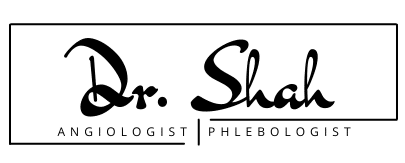arterial diseases
Aortic dissection
What is aortic dissection?
Aortic dissection is a serious condition in which the inner layer of the aorta, the large blood vessel branching from the heart, ruptures. Blood flows through the tear, causing the inner and middle layers of the aorta to separate (dissect). If the blood-filled canal pierces through the outer aortic wall, dissection of the aorta is often fatal.
Aortic dissection is relatively rare. The condition most often occurs in men over 60 years of age. Symptoms of aortic dissection can mimic those of other diseases, often leading to a delay in diagnosis. However, when the dissection of the aorta is detected early and treated in a timely manner, the chance of survival is significantly increased.
When to see a doctor?
If you have signs or symptoms such as severe chest pain, fainting, sudden onset of shortness of breath, or stroke symptoms, call 911 or emergency medical attention. These signs and symptoms do not always indicate a serious problem, but it is best to see a specialist. Early detection and treatment can help you save your life.
What are the symptoms?
The symptoms of aortic dissection can be similar to those of other heart problems, such as a heart attack. Typical signs and symptoms include:
- Sudden severe chest or upper back pain, often described as a feeling of tearing or shearing;
- Sudden severe pain in the abdomen;
- Loss of consciousness;
- Breath;
- Sudden difficulty speaking, loss of vision, weakness or paralysis of one side of the body, similar to those of a stroke;
- Weak pulse in one arm or thigh compared to the other;
- Pain in the leg;
- Difficulty walking;
- Paralysis of the legs.
What are the reasons?
Peripheral artery disease is often caused by atherosclerosis. With atherosclerosis, fat deposits (plaques) accumulate on the walls of the artery and reduce blood flow. Although discussions about atherosclerosis usually focus on the heart, the disease can and usually affects the arteries throughout your body. When it occurs in the arteries supplying blood to your extremities, it causes disease of the peripheral artery.
Less commonly, the cause of peripheral artery disease may be inflammation of your blood vessels, injury to the extremities, abnormal anatomy of your ligaments or muscles, or radiation exposure.
How to protect ourselves?
Here are some tips to reduce the risk of aortic dissection:
- Control blood pressure.
- If you smoke, take steps to stop.
- Maintain a healthy weight. Eat plenty of fruit, vegetables, whole grains and low-salt foods and exercise regularly.
- Consult a vascular specialist regularly. If you have a family history of aortic dissection or a genetic condition that increases your risk, find out how often you need monitoring and whether you need to take medication.
Risk factors
Risk factors for aortic dissection include:
- Uncontrolled high blood pressure (hypertension)
- Hardening of the arteries (atherosclerosis)
- Weakened and bulging artery (existing aortic aneurysm)
- Aortic valve defect (bicuspid aortic valve)
- Narrowing of the aorta at birth (aortic coarctation)
- Some genetic diseases (Turner’s syndrome, Marfan’s syndrome, etc.)
Other potential risk factors include:
- Age. The incidence of aortic dissection is more common in people between 60 – 80 years.
- High-intensity weight lifting. This and other strenuous resistance training can increase the risk of aortic dissection by increasing blood pressure during activity.
Complications
Dissection of the aorta can lead to:
- Death due to severe internal bleeding;
- Organ damage, such as kidney failure or life-threatening intestinal damage;
- Blow;
- Damage to the aortic valve (aortic regurgitation) or rupture in the lining around the heart (cardiac tamponade).
Diagnostics
Detecting aortic dissection can be complicated as the symptoms are similar to those of various health problems. Doctors often suspect aortic dissection if the following signs and symptoms are present:
- Sudden pain or tearing in the chest;
- Aortic enlargement on chest X-ray;
- Difference in blood pressure between right and left arm;
Although these signs and symptoms are suggestive of aortic dissection, more accurate imaging is needed such as:
Transesophageal echocardiogram (TEE). This test uses high-pitched sound waves to create an image of the heart. TEE is a special type of echocardiogram in which an ultrasound probe is inserted through the esophagus. The ultrasound probe is placed close to the heart and aorta, providing a clearer picture of your heart than a regular echocardiogram.
Computed tomography (CT) scan. A CT scan generates X-rays to produce cross-sectional images of the body. Chest CT is used to diagnose aortic dissection with injected contrast fluid. Contrast makes the heart, aorta, and other blood vessels more visible on CT images.
Magnetic resonance angiography (MRA). MRI angiography uses a magnetic field and pulses of radio wave energy to make three-dimensional pictures of the body.
Treatment
Aortic dissection is a medical emergency requiring immediate treatment. Treatment may include surgery or medication, depending on the area of the aorta affected.
